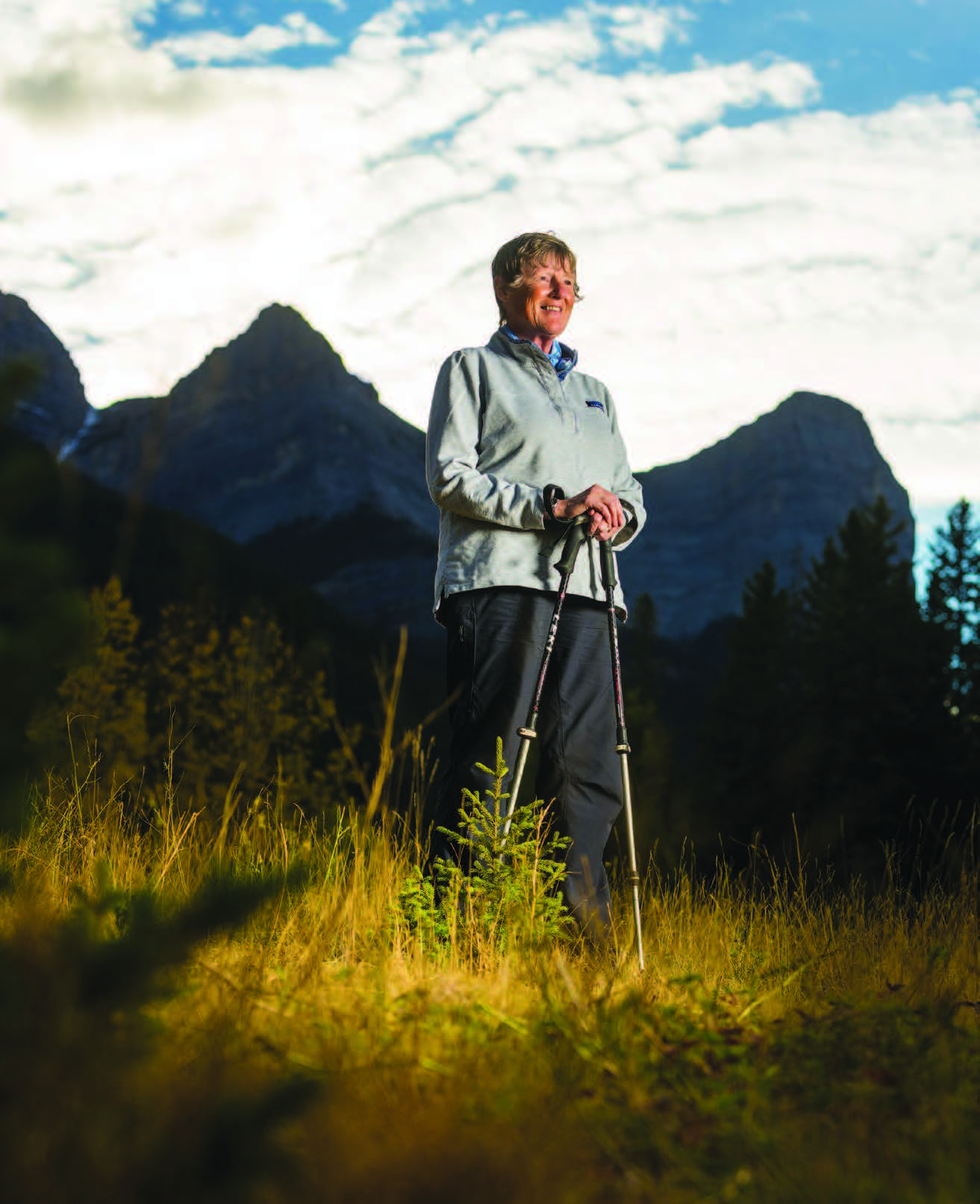
Laura S. Frost, Professor Emerita ('70 Bsc, '78 Phd)
From the vantage point of retirement, I realize that my life in science was a serendipitous series of events that revolved around the University of Alberta.
My earliest influences were my parents Ray and Virginia (Jeanne) Lemieux.
Dad, who was hired by the chemistry department in 1961, was an exceptional scientist who set a high standard in creativity for all six of his children to follow. "All good experiments begin in the library," he would advise. Dad gave me a book called The Art of the Soluble by Peter Medawar when I started graduate school that pointed out that you cannot solve a problem until you have the technology to tackle it. Certainly, I have seen this proven to be true many times in my career as I sought new ways to solve old problems. My mom had a PhD in physical chemistry and was an inspiration at a time when few women had such accomplishments to their name. I made the excellent choice of doing my undergraduate degree in the biochemistry department. I began as a summer student with my longtime mentor and friend Bill Paranchych in 1968 and liked his lab so much I stayed for my PhD. Biochemistry had an energy and camaraderie, carefully tended by the chair, John Colter, that made anything seem possible. Funding at the federal level was generous, the Medical Research Council (MRC) Protein Structure and Function group was in full swing, and Alberta Heritage Foundation for Medical Research (AHFMR) had been established, allowing really bright students to enter the graduate program. The research facilities supported by the MRC- now Canadian Institutes of Health Research (CIHR)-allowed me to develop expertise in protein chemistry and especially electron microscopy in Doug Scraba's lab and later with Richard Sherbourne in the Department of Medical Microbiology and Infectious Diseases. I was married with three children when I graduated, and I credit my husband Ed, Bill, and my parents for their support and encouragement to finish my PhD.
In the early '80s, I learned molecular biology in Neil Willetts' lab in Edinburgh, Scotland, (who was an old friend of Bill's) that started my fascination with molecular biology. I had taken a course 10 years previously as a first-year grad student in bacterial genetics from Assad Ahmed across campus in the genetics department. I realized that the power of molecular biology coupled with the satisfying concept of the control experiment was what I wanted to do. While waiting for my DNA sequencing gels to dry on many an evening, I would wander down the hall to visit with Mike James' lab members, who taught me the basics of X-ray crystallography. This culminated in a fruitful and really fun collaboration with Mark Glover, a new crystallographer recruited by biochemistry in the '90s, which defined the high points of my research career.
In 1990, I had the opportunity to move to the microbiology department-incorporated into biological sciences in 1994-as a professor with my own lab. By 2003, I was chair of the Department of Biological Sciences, which was an eye opener. The department was a smorgasbord of new, interesting topics. From the math and stats of the hardcore ecologists to the systematics of the old-style biologists, who had wonderful museum-quality collections, it was a new adventure in science. I tried to apply the ideas I had gleaned from my mentors of old: Reward enthusiasm, encourage students and staff to become expert at new (and old) technologies, keep fees as low as possible, and take advantage of any money on offer for renovations and equipment for staff and students. It is more than 50 years since I started my undergraduate degree; if I had to do it again, there really isn't much I'd do differently. Thanks, UAlberta!